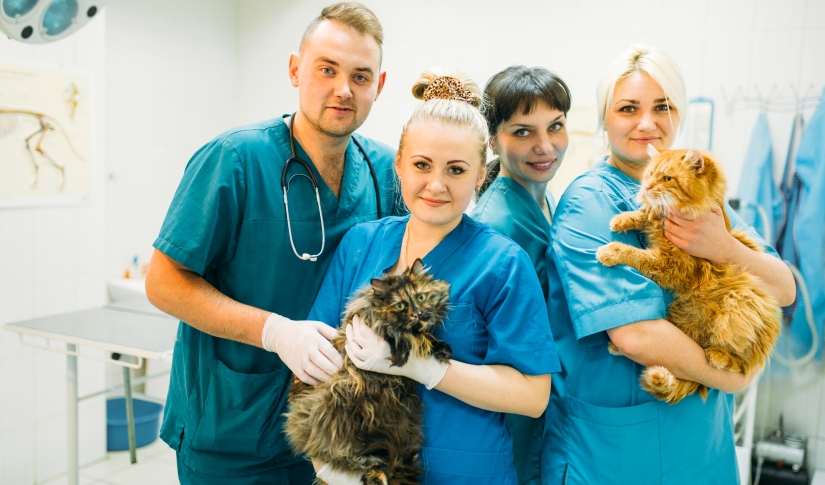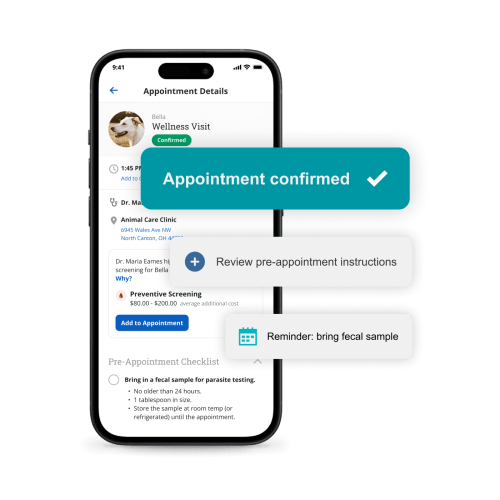7 Reasons to Cross-Train Your Veterinary Staff

You’ve assembled a talented and hard-working veterinary team—but the slightest disruption or unexpected change sends your practice’s well-crafted workflow into a tailspin. Cross-training can help your team meet daily challenges and continue high-quality care and service, no matter what comes their way.
What is cross-training for veterinary teams?
Cross-training involves training each team member for various tasks, roles, or functions outside their primary job description. This practice is popular across various industries, because the workforce is more resilient, versatile, and motivated, and businesses can maintain their normal operations, despite internal or external disruptions. In veterinary medicine, cross-training is especially common among the support staff (e.g., veterinary technicians, assistants, and client service representatives), but can also include veterinarians and practice leadership.
7 Reasons to cross-train your veterinary team
Cross-training offers many unexpected benefits not only for practice staff, but also for patients and clients. Here are seven reasons to include cross training during new hire onboarding and ongoing team development.
#1: Better efficiency
Cross-training allows each team member to better understand each practice role and how every team member’s role collaboratively achieves the common goal of patient and client care. Recognizing this interdependence can motivate team members to better support their peers by ensuring their own tasks are completed and stepping in to help others who may be busy or struggling.
#2: Increased staff confidence and motivation
Cross-training builds team confidence through skills development and continuous learning. When challenges arise (e.g., someone calls in sick, back-to-back emergency surgeries), cross- trained teams can seamlessly address the need rather than feeling overwhelmed or lacking confidence. And, because empowered teams tend to enjoy and be rewarded by their work, cross-training can help increase job satisfaction and practice loyalty.
#3: Flexible staffing
Cross-trained team members can keep their practices running during temporary staffing shortages (e.g., sick days, vacation) without undue stress, scheduling delays, or potentially dangerous or costly errors. In some instances, cross-training may help you avoid sourcing and training temporary staff from a relief service. On a day-to-day level, cross-trained teams can support each other by covering specific roles or tasks, so staff members can step away for meals or breaks. This can potentially minimize or eliminate the need to close the practice for lunch, while ensuring everyone has time to rest, eat, and hydrate. Finally, because cross-trained teams can adapt to various roles and tasks, they can better accept other changes, such as transitioning to a cloud-based practice management software, adopting new workflows, onboarding new employees, or transitioning to new practice ownership.
#4: Enhanced patient care and client service
When team members can independently carry out various tasks, the workflow is smooth, well- managed, and uninterrupted. Also, cross-trained team members are more likely to recognize and resolve potential issues before they become problems by alerting the appropriate team member or taking action themselves. By contrast, if a staff member must spend time finding a colleague because they need help to properly restrain a pet, prepare a patient sample for pickup, or answer basic client questions, safety is threatened, friction is created in the workflow, and the client may suspect a lack of knowledge or competency and feel less trust.
#5: Improved morale
Team members who have additional skills and training feel more valued and empowered, and have greater job satisfaction, which fosters a stronger connection to the practice. Connected team members experience greater ownership and pride in their work, and the variety of tasks and growing list of abilities can help drive innovative thinking and fresh perspectives that, in turn, improve the practice. Cross-training can also boost team morale when various staff members recognize another team member’s challenges and responsibilities, which may lead to more kindness, patience, and grace among team members.
#6: Cultivate talent and future leaders
Cross-training can help practice leaders identify unrecognized abilities or strengths among team members and help them discover new passions or interests that then can be further cultivated through advanced training, education, or job expansion. For example, a CSR who shadows the technician team may be motivated to pursue veterinary technician certification, while a veterinary assistant may shine as a natural leader or communicator while working at the front desk, demonstrating skills that could be shaped into a management or client experience position. By identifying and amplifying underdeveloped or undiscovered skills and traits, cross- training can create an in-house talent pipeline for future promotions or growth opportunities.
#7: Enhanced collaboration and communication
Team members who understand each other’s job roles enjoy greater teamwork and communication, and their mutual respect creates stronger interpersonal relationships and interactions. Cross-training also allows team members to see their roles as fluid and intertwined, and will likely drive them to achieve greater efficiency, better patient care, and improved client satisfaction by consistently providing high-quality service.
Ultimately, by strengthening communication and collaboration, cross-training may help minimize workplace conflicts and rifts between clinic sections and promote greater cohesion and a healthier practice culture.
Cross-trained staff have a powerful performance edge that can optimize efficiency throughout the veterinary clinic by elevating and diversifying team member skill sets and creating a deeper understanding of how each role supports patient and client care. The resulting flexible but cohesive team can better rise to common challenges and is more likely to grow and evolve with the practice through increased job satisfaction and ongoing skill development.




